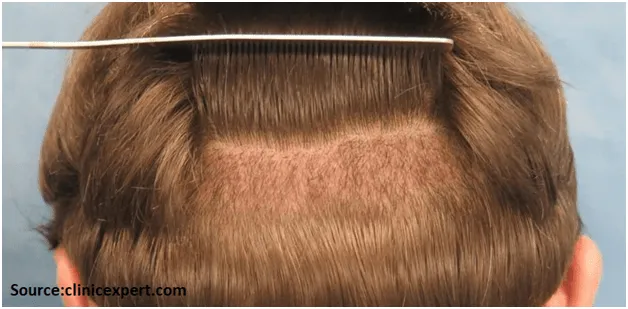Introduction
Hair transplantation replaces or thickens hair in the head’s area that is balding or thinning. It includes grafting hair from the thicker scalp’s part or other body areas to the balding or thinning of the scalp’s area. Get a hair transplant in Hyderabad today for effective and successful results.
Around sixty percent of males and fifty percent of females face hair loss someday. Individuals usually utilize over-the-counter medicines to fight this. It also involves topical treatments such as Minoxidil (Rogaine).
Another method of restoration is hair transplantation. Single scalp hairs were utilized in the initial transplantation in Japan. Specialists came up with the “plug” method in years after that. Further, specialists transplant large hair tufts in this technique.
Surgeons began to use micro-and mini-grafts to decrease the transplanted hair’s look over the scalp as time passes by.
Are hair transplants effective?
Hair transplantations are more effective than over-the-counter medications for hair restoration in most cases. However, there are a few things to think about:
- In three to four months, anywhere between ten to eighty percent of the transplanted hair will fully grow back.
- Transplanted hair, such as natural hair, will thin as time passes.
- Individuals with dormant hair follicles (sacs under the skin that contained hair but not anymore) may have decreased successful transplants. As per a 2016 study, plasma therapy can assist up to seventy-five percent of transplanted hairs fully return.
Hair transplants are not always successful. It is mainly for restoring hair if you are naturally thinning or balding or lost hair because of an injury.
Because several hair transplants utilize your remaining hair, they are not as successful for treating individuals who go through:
- Baldness
- Chemotherapy or other medicines causing hair loss.
- Widespread thinning
- Scalp’s injuries have left thick scars over the scalp.
What is the procedure for a hair transplant?
A hair transplant is a technique that takes your current hair and transplants it to a site where you do not have any. The specialist usually takes strands from your head’s back. Yet, the specialist can use your other body areas to extract hairs.
Your specialist sterilizes the site where the surgeon will remove the hair and numbs the site using anesthetic prior to the transplant. Also, you can request sedation if you wish to sleep through the procedure.
Following that, your surgeon will utilize one of these two transplant techniques: FUE or FUT.
Follicular unit extraction (FUE)
Your surgeon follows these steps to perform an FUE procedure:
- The surgeon shaves the hair on your head’s back.
- Then the surgeon extracts individual follicles from your scalp skin. Each strand, which the surgeon removed, will have a tiny mark.
- The specialist makes tiny holes within your scalp, similar to the FUT procedure, and grafts hair follicles into the holes.
- The surgeon then uses bandages or gauze to cover the surgical area.
Follicular unit transplantation (FUT)
Another name for FUT is (FUSS) Follicular unit strip surgery. Your specialist will do the FUT technique mentioned in the below steps:
- The specialist extracts your scalp’s piece, usually from your head’s back, with a scalpel. Typically, the strip is six to ten inches long, yet it can stretch from ear to ear.
- Surgeons use stitches to close the wound where they removed the scalp.
- Your specialist and their assistants use a scalpel to cut the scalp strip into minor pieces. They may sever the portion into as many as two thousand tiny fragments called grafts. Only one hair may be there in a few of such grafts.
- The specialist creates tiny holes inside your scalp using a blade or needle where hair will get transplanted.
- The specialist inserts the hairs removed from the scalp into the puncture holes. Grafting is the term for this procedure.
- Your surgeon then utilize gauze or bandages to cover the surgical areas.
Below are factors to determine the number of the grafts you receive:
- The type of hair do you have
- The size of the transplant site
- Hair quality (including thickness)
- Hair color
Recovery
FUE and FUT technique can take anywhere from a few hours to many days to finish. The surgeon’s amount of work also done partly determines it. You can return home the very same day of your procedure.
Your specialist carefully takes out any bandages after he completes the surgery. Your specialist may inject triamcinolone to decrease the swelling as the area may get swollen.
Soreness or pain is likely to happen at the transplant area and in the hair removed place. Your surgeon may prescribe the below for the coming days:
- Ibuprofen (Advil) and other pain relievers
- Anti-inflammatories (for example, an oral steroid) to decrease swelling
- Minoxidil (Rogaine) and Finasteride (Propecia) are two medications that can stimulate hair development.
- Antibiotics for infection prevention
Below are some suggestions for hair transplant surgery aftercare:
- Do not wash your hair for some days after the procedure. For the initial few weeks, only utilize mild shampoos.
- In about three days, you can return to work or your routine.
- For about three weeks, do not use a comb or brush over the new rafts.
- Wear no hats, pullover shirts, or jackets until your specialist allows you too.
- For about a week, do not exercise.
Do not be worried if a few hairs fall. This process is a normal part of the technique. The transplanted hair may not develop much or blend in with the hair around it for some months.
Side effects of hair transplantation
Scarring is the most common side effect, and no procedure can eliminate it.
The following are some other possible side effects:
- Infections
- Near the surgical place, there may be a crust or pus drainage.
- Itching, itchiness, and swelling of the scalp
- Hair follicle inflammation (folliculitis)
- Bleeding
- Around the surgical place, there is sensation loss.
- Hair that does not match the rest of the head or is noticeably thinner
- Still, if you are losing hair, it is because you are balding.
Propecia and Minoxidil both have potential side effects, including:
- Scalp irritated
- Dizziness
- Chest discomfort
- Headaches
- Heart rate fluctuation
- Swelling of the feet, hands, or breasts
- Sexual incompatibility







